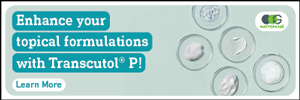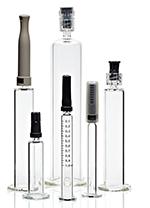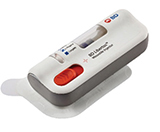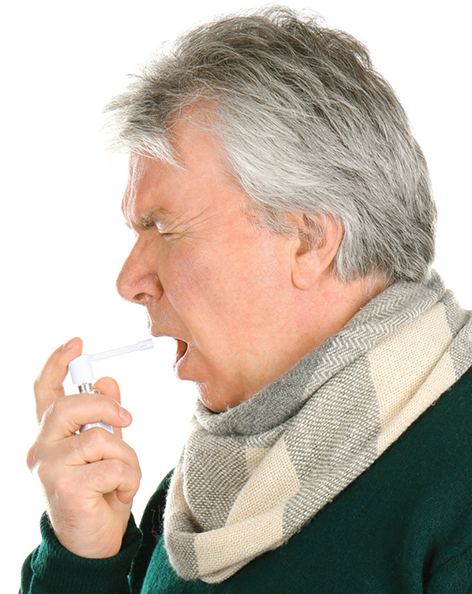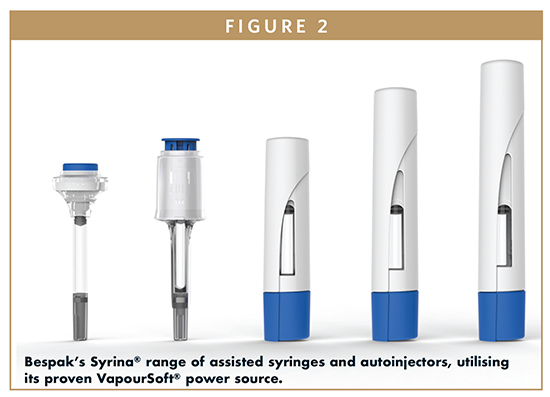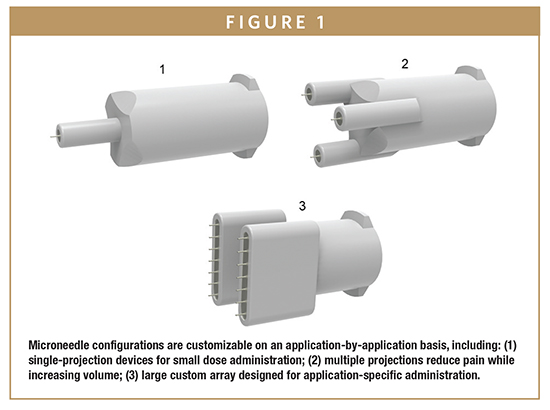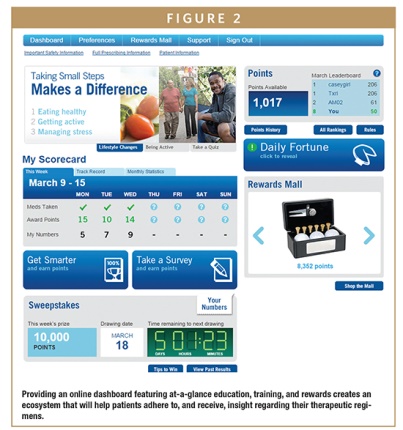Injection Devices
SPECIAL FEATURE - Prefilled Syringes & Parenteral Manufacturing: Drug & Packaging Ensure Safety, Compatibility & Stability
Contributor Cindy H. Dubin highlights some of the key players in the market and where they are focusing their efforts to ensure products are of the highest quality, safe, and easy to use.
GLOBAL REPORT - 2017 Global Drug Delivery & Formulation Report: Part 3, Notable Transactions & Technologies of 2017
In part 3 of this 4-part series, PharmaCircle in collaboration with Drug Development & Delivery, reviews transactions and technologies that provide greater insight into what we can expect in terms of product development and approvals over the next decade.
INTEGRATED DELIVERY SYSTEMS - The Value of an Integrated System for Combination Products
Theresa Bankston, PhD, says the fact that many of these therapies are designed for home delivery by patients or caregivers via subcutaneous injection, combined with increasing complexity of longer-acting formulations, larger injection volumes, and longer injection durations, has raised the bar for seamless injection delivery technology.
CONTAINER CLOSURE SYSTEM - Recent Prefillable Syringe Developments Mirroring Increasing Biotech Drug Product Demands
Stefan Verheyden says the container closure system has become a decisive factor for sustained market success, with autoinjectors and injection pumps as growing areas of interest.
THROAT SPRAY SYSTEMS - Key Considerations When Developing a Throat Spray Solution
Degenhard Marx, PhD, and Günter Nadler discuss the treatment of sore throats via a pump spray and explore the considerations to be made when developing a reliable spray product.
PREFILLED SYRINGES - Prefilled Syringe Automated Inspection & End-Product Testing
Gregory A. Sacha, PhD, introduces the common equipment available for automated inspection and discusses inspection testing methods for prefilled syringes.
GAS-POWERED DELIVERY - Innovating Injectable Devices to Deliver Today’s Pharmaceuticals
Steven Kaufman believes that with autoinjectors in high demand by the biopharma industry, gas-powered delivery systems may have the solution to many of the difficulties the industry is facing.
GLOBAL REPORT - 2017 Global Drug Delivery & Formulation Report: Part 1, a Global Review
In part 1 of this 4-part series, PharmaCircle in collaboration with Drug Development & Delivery, focuses on the macro aspects of the 2017 product approvals.
INTRADERMAL DELIVERY - New Technology Brings Simplicity & Scalability to Intradermal Drug Delivery
Boris Stoeber, PhD, Sahan Ranamukha, PhD, and Rory St. Clair describe the Microdermics technology and its improvements over the conventional subcutaneous route of administration.
SPECIAL FEATURE - Injection Devices: Manufacturers Focus on 21st Century Technology While Still Tackling Traditional Challenges
Contributor Cindy H. Dubin highlights some of the key companies in the injectable delivery market that are focusing on advanced technology as well as the more traditional challenges related to breakage, leaching, and needlestick prevention.
DEVICE TRAINING - Maximizing Patient Adherence by Minimizing the Forgetting Curve
Chris Evans explains how it is important that pharmaceutical companies and their drug delivery system partners proactively address the forgetting curve by rethinking how patients learn to use self-administration systems.
PACKAGING - Child-Resistant Features for Container Closure Systems
Stefan Hellbardt, PhD, Guenter Nadler, and Degenhard Marx, PhD, highlight the successful introduction of Aptar’s first CR/SF nasal spray pump and the first dermal dispenser on the US market.
DEVICE REGULATIONS - Early Preparation Will Pay Big Dividends as EU Enacts New EU Device Regulations
Joanne Emmett says current directives are giving way to new regulations that require Class III and implantable devices to undergo clinical investigation to show that they are equal or superior to other products on the market.
TECHNOLOGY-ENABLED HEALTH - Digitally Connected Health Technologies: Blazing Meaningful Trails in Healthcare
Daniel Spors and Kyle Dolbow, PhD, say the overall digital health market is currently $76 billion, and is estimated to grow at 21%, and this space includes life sciences and medical device companies that are incorporating digital technology into their products and services, such as smart inhalers and remote therapy devices.
OPHTHALMIC SQUEEZE DISPENSER - Eliminating the Need for Additives in Multidose Preservative-Free Eyecare Formulations
Degenhard Marx, PhD, and Matthias Birkhoff highlight their company’s Ophthalmic Squeeze Dispenser (OSD), a multi-dose dropper that relies solely on mechanical measures to prevent microbial contamination of the bottle content.
ADVANCED DELIVERY DEVICES - The Staked Needle Pre-Filled Syringe: Benefits, Conventional Limitations & a New Approach
Horst Koller and John A. Merhige, MEM, say the advantages of a Staked Needle Pre-Filled Syringe are clear and well documented, but significant risks remain. A new alternative is now available that addresses the known challenges and adds critical usability and safety features while preserving existing components and processes.
EXECUTIVE INTERVIEW - Aptar Pharma: Quality Will Inject Real Growth Into the Injectables Market
Bas van Buijtenen, President of the Aptar Pharma Injectable Division, reviews the past 12 months and assesses what will drive the market in the future.
SPECIAL FEATURE - Injectable Drug Delivery: New Technologies Deliver Biologics & Differentiate Brands
Contributor Cindy H. Dubin reports on a segment of the drug delivery industry that will see its market revenue double in just 5 years in response to a growing need to deliver highly viscous, high-volume drugs.
DRUG DEVELOPMENT - To De-Risk Patient Acceptance of Biologic Drugs, Focus Early on Delivery
Jeannie Joughin, PhD, asks what does a pharmaceutical company do when everyone wants more effective new therapies but no one – including third-party payers – wants to pay the price for their development? De-risk the drug development process, in every possible way.
2017 GLOBAL DRUG DELIVERY & FORMULATION REPORT - Notable Technologies, Approvals, Transactions, Pipelines & Perspectives
This third annual report, a collaborative effort between team members at Drug Development & Delivery and PharmaCircle, provides a look back at 2016 in terms of approvals and developments in the area of drug delivery and formulation. The report continues to cover the following significant key points of interest, with the belief that understanding the past, even the recent past, can provide insights to what is possible.
What are Injection Devices?
Drug delivery devices are the physical agents that are included in the drug delivery system. There are a multitude of devices that people interact with every day which fall under this category. In modern pharmaceuticals, novel drug delivery devices and combination products are being designed for a number of reasons, including giving patients the ability to self-administer some medications at home, which can help them adhere to recommended regimens.
Evolution of Injection Devices
With modern technology and medicine, the combination product market is evolving. Any combination device, especially drug device combination devices, must follow strict guidelines. Thanks to advancements in engineering, an increasing number of drug delivery devices are being developed as electromechanical devices linked to apps in order to provide patients with more supervision when administering medications at home. Some of these medical apps may receive feedback from the device to track how much drug is being administered and how often, provide patients with dosing reminders and connect clinicians with this information so they can monitor patient compliance. The drug delivery devices that so many patients depend on must adhere to regulatory standards. There are strict guidelines for all methods of drug delivery, such as needle-based, aerosol, and needle-free injectors.
Smart devices, interconnectivity, and related technology provide real-time data to healthcare providers for analysis, but these device additions should not increase risks, including patient understanding of treatment delivery, or jeopardize compliance. Data collection needs to be “passive” to the patient. In other words, invisible to the patient’s use of the device so that the collected data provides a true benefit to the end user. If these design considerations can be implemented without impacting the patient or how they administer and receive treatment, then smart devices can provide advantages to the patient and the industry.
Injection Device Global Market Trends
The global injectable drug delivery devices market is expected to show significant growth in the coming years as manufacturers introduce technological advancements and product innovation meant to improve convenience, compliance, and ease of administration of parenterals. Additionally, the increasing preference for at-home self-injection is driving the market as patients prefer to continue to avoid healthcare settings post-COVID. With all of this taken into account, one market study predicts the global market to reach almost $26 billion by 2025, up from $15 billion in 2020. However, another report values the global market at $42.76 billion in 2021 and expects it to reach $50.9 billion in 2025.
How the numbers will play out is yet to be determined, but the studies do highlight the focus on single-use and reusable systems. Disposable-use prefilled syringes (PFS) are increasingly used due to the prevalence of chronic diseases and the growing number of biologics best delivered by syringes. Single-use autoinjectors are also poised to experience increased demand, particularly with the growing pervasiveness of anaphylaxis disorders. Autoinjectors also provide a convenient alternative to manual syringe injections for subcutaneous administration.
Reusable Injection Devices
Pen injectors with prefilled cartridges have also proven to be a viable alternative to syringes. These injectors can perform hundreds of injections, with patients controlling the speed of delivery to minimize pain or discomfort during use.
Making injection devices partially reusable is a cost-saving strategy. Ideally, the device’s mechanism and/or electronics are the reusable parts of the system – as these are often the costliest – and the drug containers and needle are one-time use.
Another cost-saving strategy that several large pharmaceutical companies are deploying is to develop a device platform for multiple drug products in their portfolio. This allows them to spend resources on a single significant development program, for one optimal injection device, which then requires minimal customization for each sub-sequent product line.
Despite efforts to make better, safer, simpler injection devices, patient adherence is still a challenge associated with self-administration. This has resulted in the emergence of smart devices, such as wearable injectors, which share patient data with healthcare providers to ensure compliance. And while it is expected this sector will continue to grow, some industry insiders warn against making these devices too intrusive.





